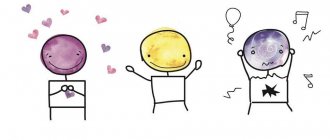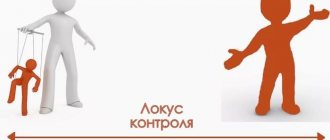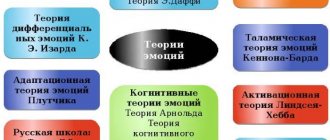Hello, dear readers of the KtoNaNovenkogo.ru blog. I won’t open America to you if I start with the fact that man is a biosocial being. People cannot live both without nature and without society.
A person is born, raised in a family, goes to kindergarten, then to school, to university, to work, etc. Everywhere he is surrounded by the same people with whom, whether you like it or not, he is forced to come into contact .
Sometimes a lot depends on the quality of these contacts, and first of all, the comfort of the emotional background.
In modern society, it is extremely important to be able to communicate at an appropriate level.
The ability to attract people, to obtain from them what would be conducive to the promotion of one’s (or someone else’s) interests, the skills of proper communication are not only an urgent need, but also something that is always and everywhere highly valued.
So it is not in vain that such a significant place is given to the topic of communications
Well, for you and me - those who are directly affected by this - it would be very useful to learn what communication is, and to understand at least a little about the conditions under which communication can be called effective and what significance this effectiveness has in our lives.
Communication barriers
- Phonetic barrier. It is due to the peculiarities of speech. It can be complete or incomplete. Incomplete misunderstanding occurs when a person slurs his words, has a lisp, or speaks very quickly. There can be a complete misunderstanding, for example, when conveying information in a foreign language. A phonetic barrier also occurs with a sharp increase in tone, since this blocks the understanding of what is being said, and attention is transferred to the attitude of the speaker. The phonetic barrier can be overcome by proper pause placement and moderately calm speech.
- Semantic barrier. It occurs when the interlocutor does not understand the meaning of what was said. This is due, for example, to the use of slang words by representatives of various subcultures. To overcome this barrier, it is necessary to abandon the use of speech forms used purely in your subculture.
- Stylistic barrier. This is a discrepancy between the style of data transmission and its content. For example, presenting a recipe in an artistic style.
- A logical barrier occurs in people with different types of thinking. For example, one interlocutor has abstract-logical, the other visual-figurative. You can explain the road in completely different ways. For a person with abstract logical thinking, it will look like this: “walk straight 200 meters to the pedestrian crossing sign, after it turn left and walk forward all the way until you meet a yellow sign.” For a person with visual-figurative thinking, the following explanation will be typical: “Go there (points forward with his hand) until you see a crowd of people, its direction will show you the further path.” It is necessary to learn to adapt to the type of thinking of the recipient of information.
Classification and structure
Communication is a rather complex concept that has its own structure. All communication can be divided into two main groups - communication between several people (also known as interpersonal) and communication between companies (also known as organizational). Interpersonal communication is divided, in turn, into informal and formal.
From all these names of groups and subgroups, it becomes clear that there are types of communication conducted according to certain rules, with the necessary intonation, as well as with the formality inherent in certain events.
And there is also informal communication, in which people communicate with friends, family, or just acquaintances, without observing any regulations or rules. During informal communication (communication) with other people, a person behaves at ease and naturally.
Organizational communication is divided into external, which occurs between any organizations and the environment, and internal, in which communication is built between departments in a particular company.
But here too there is a division in communication – horizontal and vertical. With horizontal communication, communication occurs between departments located at the same level, and with vertical communication, communication occurs between subordinates and superiors.
From all this we can conclude that communication is a definition that exists in any area of human life and requires a certain understanding and approach.
Basic communication model
The specifics of information exchange traditionally depend on the characteristics of society, which determines the content of a wide range of sociocultural meanings in this concept. But in any case, the term “communication” is characterized by the presence of five components necessary for a successful interaction process:
- source (one who wants to convey his thought to another person) - essentially this is the addresser, acting as a generator of a message for transmission;
- a conductor or converter (that which converts information into signals) - that is, a regular transmitter sending messages through any communication channel;
- direct communication channel (means, path for transmitting information);
- receiver (that which adapts and deciphers the source signal) is the same as the decoder, which translates the signals into a “digestible” message;
- recipient (the one to whom the information should have reached) - the final addressee for whom the message was intended.
According to this model of a communication act, the addresser generates and encodes certain information using sign means used in the sign system of the corresponding communication channel.
The recipient, in order to assimilate the information received, does the same thing, only in reverse order (the result of his efforts is decoding).
The holistic process of communication (adequate transfer of information) usually has a multi-layered structure, consisting of many sequential acts.
In this case, the main unit of communication can only be a message (signal, message) that performs one or several functions , such as:
- information and communication (information exchange);
- interactive (communication);
- epistemological (cognition);
- axiological (exchange of spiritual and cultural values);
- normative (consolidation or transfer of norms);
- socio-practical (transfer of knowledge, skills, abilities).
The content of communication and its direction mainly depend on these functions, which at the same time serves as prerequisites for the process of mutual exchange of information.
At the same time, the necessary conditions for successful communication are met, starting with the presence of transmission channels and perception mechanisms and ending with a minimum of structural components , which certainly includes:
- participants in a communication act;
- a situation or incident that requires discussion;
- message content (text, signal);
- motives and goals to convey something to the interlocutor through a message;
- material transfer of information.
To carry out any communication, sign systems adequate to the goals are needed (they are different in each culture).
Most often, such a system is language , which is used both in the form of oral speech and in written form.
Types of communication
The first thing that is important to note here is that communication and communication are not the same thing. At the very least, these concepts cannot be identical and should not be used as synonyms.
If communication is a shallow, easy and most often everyday interaction, then communication is a professional, interactive interaction, with conscious goals and pre-prepared scripts.
Absolutely any interlocutors can become participants in communication, and participants in communication can only be those who set themselves the task of influencing their partner, those who realize that their interlocutor faces exactly the same task.
Unlike communication, communications are absolutely not characterized by either feelings or emotions (what are they?), and if such appear, it is certainly with a pragmatic purpose - that is, with the understanding that now it is necessary to solve this or that situational problem .
There are a variety of classifications regarding types of communication. Let's present just a few of them:
- cognitive – pursues the goal of expanding the circle of knowledge of the partner, his information fund. The expected result is the mastery of newly acquired information and the subsequent application of new knowledge in one’s practical activities;
- persuasive , the main goal of which is to evoke in the interlocutor certain feelings necessary for the formation of value orientations and attitudes necessary for the initiator. The expected result is to make the interlocutor a like-minded person, attract him to your position, change his personal guidelines and then use his intellectual capabilities;
- expressive - pursues the goal of forming a special psycho-emotional mood in the interlocutor, in order to then encourage him to perform the action you need. The expected result is a change in the emotional background of the partner, his involvement in specific actions and actions beneficial to the initiator.
Thus, each of the participants in communication is a kind of manipulator who has the ability to influence partners for a specific purpose or has such a task in front of him.
Concept of effective communication
Just as with the definition of communication, it is important to understand one fundamental thesis: successful communication and effective communication are different things.
Simply put, successful is a completed communication (regardless of how the communication ended), and effective is a completed communication act, when certain goals are achieved as a result of interaction.
A specialized set of effective communication skills is essential for effective communication. And we are talking not only about the ease of establishing contact and the ability to maintain any conversation, no matter what slums it leads to - here we need specific abilities, which are usually classified as syntonic communication skills .
Syntons are psychologically positive elements of communication, a kind of emotional stroking that helps establish contact and promote mutual understanding.
From this point of view, effective communication is the highest level of communication, during which dry facts are not conveyed. Here, the feelings and emotions of a person are mainly involved in order to achieve the expected result from him. The communicator is required not only to be able to understand the goals and motives of the interlocutor, but also to be able to play on his worries.
There is also such a thing as ineffective communication - this is extremely unpleasant communication that brings misunderstanding, confrontation and disagreement, which can lead not only to ordinary quarrels, but also to deep (irreconcilable) conflicts with uncompensated consequences.









